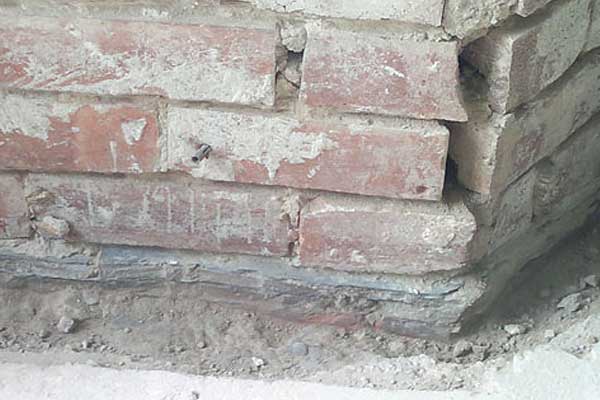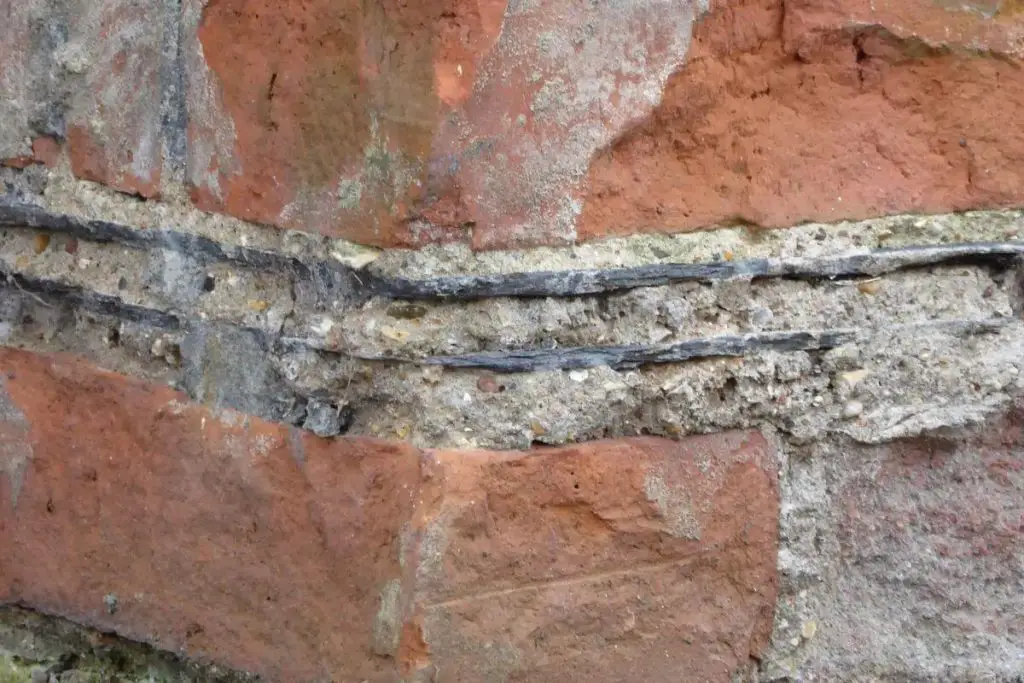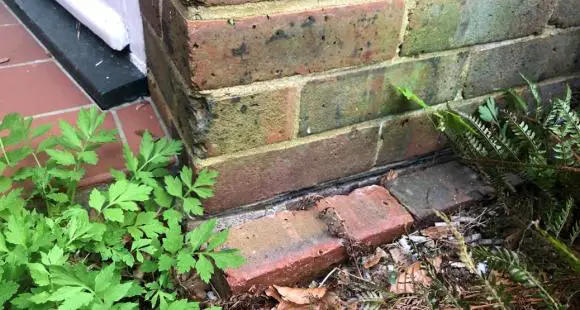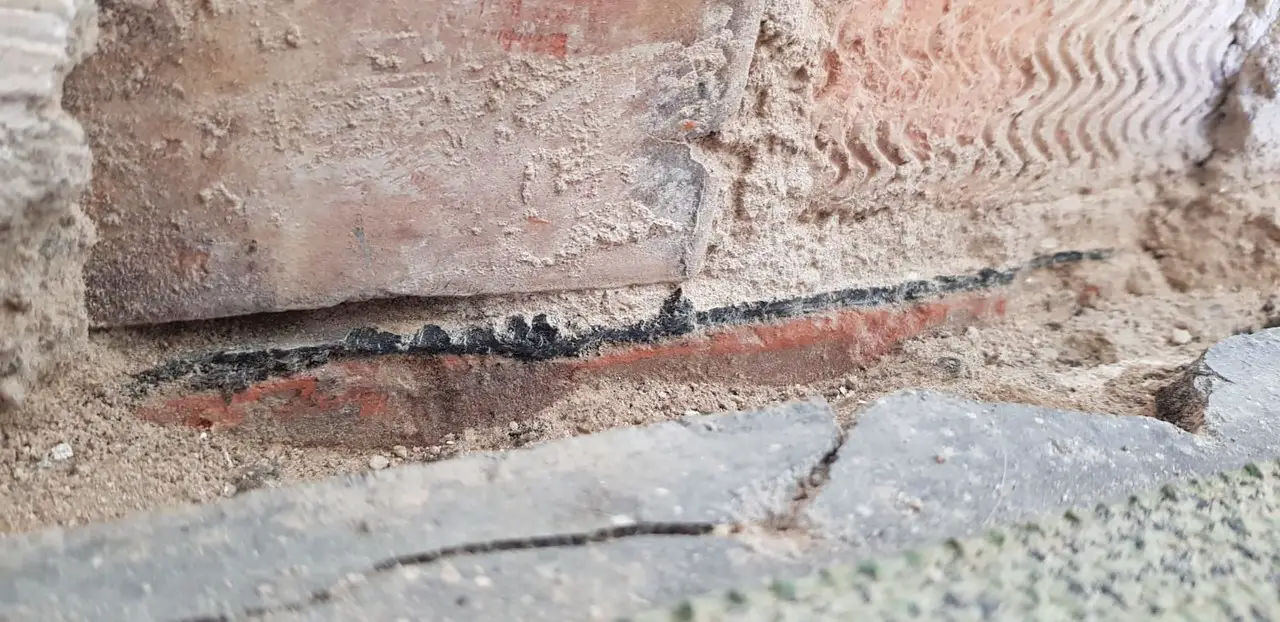Damp Proof Course Old Houses – The what, the why and the how
A Damp Proof Course in old houses plays a crucial role in keeping a period property warm and dry. They are highly misunderstood and can often be miss identified as the root cause of damp problems in an old house.
To get a better understanding of the damp proof course in old houses it’s important to know how a DPC works and understand the construction style of your home.
This guide will provide a full overview of an old house’s damp proof course, what it does and importantly what not to do to an old house.
What is a Damp Proof Course?
To begin we will go over the basics of what a damp proof course or DPC actually is and how it benefits your home.
Damp proof courses in old houses were typically a layer of material built into the walls of your home, typically a foot or so up from the base of your walls.

The objective of this layer was to stop moisture from rising up through the lower brickwork and into the walls of your home. Unfortunately, water can be very good at moving through brickwork via capillary action, which leads to a number of issues with dampness.
Think of it like putting a sheet of paper in an inch of water and how the water will slowly begin to spread up the paper.
The damp-proof course layer is there to act as a physical barrier to prevent water from rising up any further.
Builders in years gone by would typically use various materials when installing a DPC. Common materials included slate, bitumen, jute and hessian.
Modern builders, however, tend to opt for sheets of bitumen or plastic as well as chemical injections. Unfortunately, chemical injection DPCs can do a great deal of damage to a period home which we will discuss later in this article.
Damp Proof Course Old Houses – the history
Although DPCs are commonplace now, there was a time when houses were built without any damp-proof courses at all.
House construction and heating in times gone by were very different in comparison to modern homes.
In the Georgian and early Victorian periods, homes were not always built with a damp-proof course.
With thick single masonry walls, they used breathable materials which enabled the moisture to travel through and evaporate before the internal plaster finish. This combined with big open fires and ventilation helped stave off dampness within their homes.
The single masonry wall approach meant that keeping the walls warm with the dry heat of a fire was imperative to fighting off dampness.
As building techniques became more advanced the benefit of a DPC became more apparent and in 1875 it became compulsory to build homes with a damp proof course in Victorian houses throughout London.
The combination of breathable materials and a damp proof course to block moisture from rising, enabled people to keep their homes warm and dry.

If you would like to learn more about these techniques, check out our full range of articles on how to combat dampness in old houses.
As construction techniques continued to evolve, cavity walls in the 1920s changed moisture and damp management once again.
Cavity walls are built using two separate brick walls with a gap in-between. The first wall is exposed to the elements and is designed to act as a buffer against moisture and the weather. The second internal wall will therefore be warm and dry for the interior of your home.
Damp Proof Course in Victorian Houses – the dreaded chemical damp proof course
Prospective owners of old homes or people dealing with dampness in their property will often consult a damp proofing professional to look at the property.
Unfortunately, a number of companies will use a one size fits all approach and not look at the very specific needs of an older home. These companies have become highly proficient at marketing a chemical solution, which can often cost homeowners thousands with little or no long-term benefit.
These companies will often state the failure of the original damp proof course and recommend a series of chemical injections into the walls of your home to help solve the mythical rising damp in your home.
This course of action can be incredibly costly for homeowners and can be detrimental to an old house. Even Stephen Boniface former chairman of the construction arm of the RICS stated that chemical DPCs are a complete waste of money for a period property.
In addition to being ineffective, they also cause old homes a number of issues such as damage to the brickwork as drilling is required for the chemicals to be injected, resulting in a clear pathway for dampness and moisture.
We would highly recommend avoiding a chemical DPC in an old house, instead, we recommend learning more about the different types of damp and using this information to diagnose and fix the problem. If you would like to learn more about rising damp in old houses, check out our full guide.
Damp Proof Course Old Houses – How to Maintain
A damp proof course in a Victorian house or an old home, will likely stay intact as long as the walls of the house are. The issues that arise with damp proof courses are typically external factors that prevent the DPC from acting in the way it was intended.
Below we have compiled a checklist of things to look out for to ensure your damp proof course can work as intended and prevent damp outbreaks in your home.
- External ground levels – when older homes were built the external ground level surrounding the home tended to be much lower than they are now. Over the years the levels of gardens, driveways and side paths have been slowly raised. The issue with this is when a path or driveway bridges the damp proof course, it enables moisture to bridge above and up through your walls. The solution in these instances is to lower the external ground lower and ensure the level is at least 150mm below the DPC.
- Vegetation – it is best practice to ensure that plants and vegetation are not rising up against your external walls. Removing moss and other plants can greatly help the quality of your walls and prevent dampness issues.
- Brickwork – ensure your brick work and pointing is in good condition can also ensure the effectiveness of your damp proof course.
- Air bricks – these are a key aspect in keeping an old house ventilated and care should be taken to ensure that they have not been covered and blocked with vegetation.
- Guttering – a common cause of dampness is blocked or faulty gutters. Ensuring that water is not cascading down your walls or leaking will greatly reduce the likelihood of a damp issue in the surrounding area.
The above checklist is designed to not only help maintain a damp proof course in an old house but also ensure fundamental checks are taken against other elements which can often lead to dampness.

If you still have questions on how to treat damp in old houses, check out our full treating damp in old houses area for more guides.


Leave a Reply